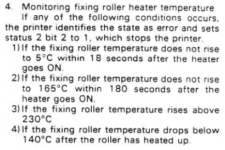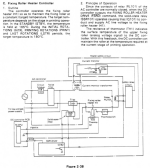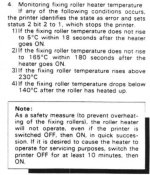So, after replacing the IC and the voltage regulator in the daughter board, nothing has changed.
At a further check, it seems as though it is in fact the 24V psu which is not working. It temporarily provides sufficient voltage for triggering the relais and spinning the fan, but not enough for the 5V PSU to come alive. With my multimeter I read around 4-5 V at the 24V lines, so way too low.
I am just speculating, though. The brief moment during which something happens is so short (less than 3 seconds) that it's impossible for me to gather additional solid evidence for narrowing down the troubleshooting. Without a working unit at hand, it's indeed difficult.
I will try to find a way to trigger the unit even without connecting it to the printer, in such a way to rule out the logic board and speed up the investigation on the PSU alone.
At a further check, it seems as though it is in fact the 24V psu which is not working. It temporarily provides sufficient voltage for triggering the relais and spinning the fan, but not enough for the 5V PSU to come alive. With my multimeter I read around 4-5 V at the 24V lines, so way too low.
I am just speculating, though. The brief moment during which something happens is so short (less than 3 seconds) that it's impossible for me to gather additional solid evidence for narrowing down the troubleshooting. Without a working unit at hand, it's indeed difficult.
I will try to find a way to trigger the unit even without connecting it to the printer, in such a way to rule out the logic board and speed up the investigation on the PSU alone.



